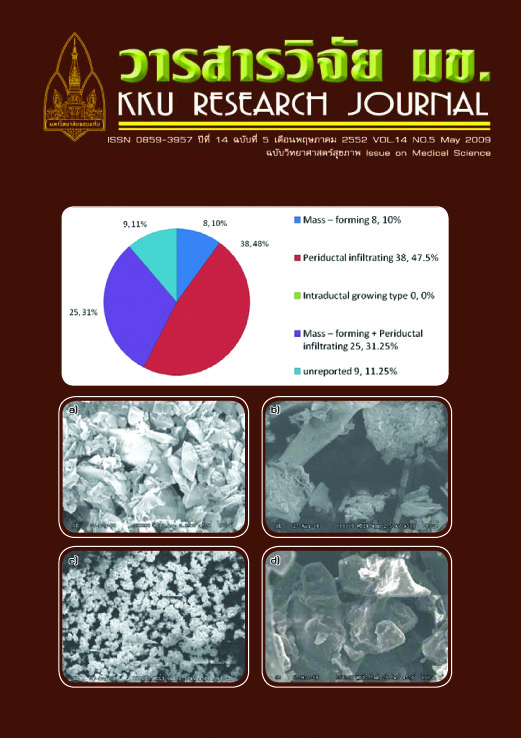Human cholangiocarcinoma and its pathologic anatomy in Ubonratchathani (Thai)
Main Article Content
Abstract
Cholangiocarcinoma (CCA) is a malignant tumor which has been found commonly in the northeastern part of Thailand. Increasing rate of CCA has been observed in Sappasitprasong Ubonratchathani Hospital;however no general data and pathoanatomy of CCA has been described. Therefore this study aimed to analyze the records of patients who were treated for cholangiocarcinoma at this hospital to support surgeons and researchers for patient management. From 2005-2007, 80 patients with cholangiocarcinoma who underwent surgery at Sappasitprasong hospital were studied. 51 cases (63.8%) were male and 29 cases (36.3%) were female, with average age of 64 years old. Most of them were under bachelor degree of education and were agriculturists. The highest number of patients was from Ubonratchathani district. According to location of the tumor origin, 50 cases (62%) were intrahepatic, 14 cases (17.5%) were extrahepatic, 16 cases (20%) were both intra-extrahepatic. According to the classification of the Liver Cancer Study Group of Japan (1999), the tumors were classified as 38 cases (47.5%) periductal infiltrating, 25 (31.25%) mixed type (Mass-forming + Periductal infiltrating) and 8 cases (11.25%) mass-forming. According to the liver lobe, 26 cases (50.98%) were in the right lobe, 10 cases (19.61%) were in the left lobe and 15 cases (29.41%) were in both lobes. Most of the tumors were between 2-5 cm in diameter. The pathoanatomy of CCA in this study was mostly poor prognosis type, probably because the patients were diagnosed at a late stage.


